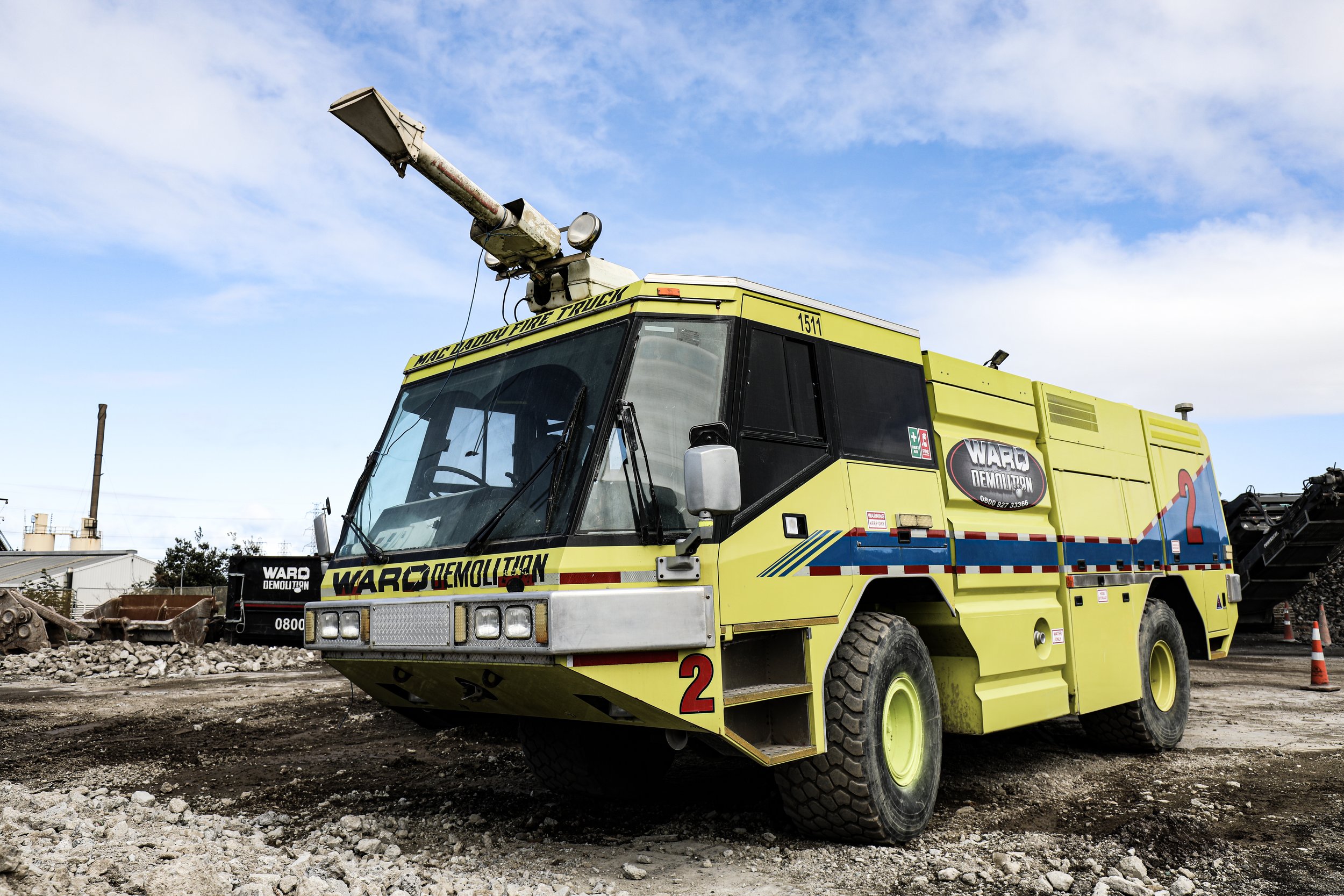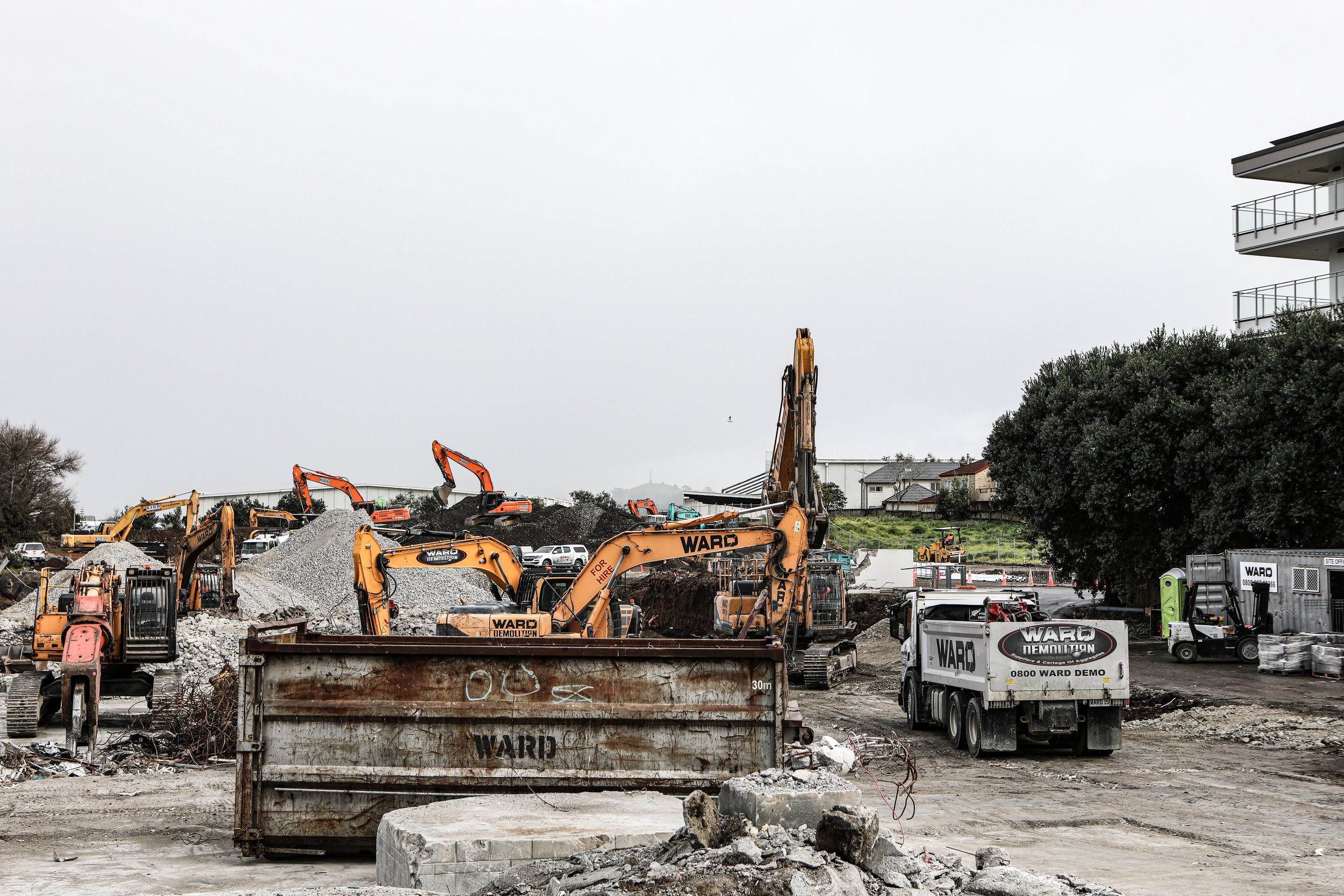Harrison Road | St Johns
2021 | Example of Recycling Processes | tight deadline
Project and Team
The Demolition of this 2 story, 8,000 square metre building was the first stage of many, in the construction of 160 workspaces across 9 separate buildings on the 20,000 square metre site. This meant the project was utterly reliant on our team meeting our deadlines as a delay would mean impinging on the entire project. These deadlines were met by meticulous organisation, with daily pre-start meetings discussing the days objectives. Ward site manager Richie ensured this was achieved, working alongside the team of 21 members, including head operator Zoran who’s been with us for 16 years as well as Hayden and Tyler who each have 6 years experience. Due to Ward Demolitions extensive quantity of machinery this allowed us to implement a “all hands on deck” technique, meaning at one given point 8 excavators were onsite ensuring speedy processing of the structures materials.
With multiple contractors working simultaneously onsite, the management team executed some great solutions to logistic problems, met tight deadlines and ensured all safety measures were implemented.
Recycling -Chasing the final percentage
100% of the structures steel and concrete was recycled, with the concrete being crushed onsite to be reused in the foundations of the next development.
Ward Demolition always strives for zero waste. It’s very rarely the case that our recycling percentage drops below 90%. Recycling 100% of the buildings metal and concrete usually lands us around the 90% range on buildings. But how do we achieve this when the structure contains higher quantities of rubbish? Harrison Road’s St Johns is an excellent example of this.
A total of 93% of the structure was recovered. This number itself may not seem hugely impressive, but let me tell you why it amazes me. Concrete and metal made up 86% of this number. Meaning the original waste pile was 14%, so how did we bring this down to only 7% of materials heading to landfill?
We started by salvaging what we could to be sold for reuse. Of note were 2 pianos, some cabinets and 11 pallets of carpet tiles. We removed these by hand and relocated them to our salvage yard where they were sold to a local church. This doesn’t put a huge dent in the percentage but that’s at least 4 tonnes of materials that won’t go to waste. Every effort counts in this game.
The remaining 617.52 tonnes of rubbish consisted of materials such as plasterboard, vinyl, glass and miscellaneous plastic objects. Of this 409.10 tonnes were separated and sent to the local recycling facility. At this facility unusable wood is converted into wood chips for gardens, plasterboard is separated into recyclable paper and gypsum that is used as fertilizer, alongside other recycling efforts. 74% of this waste (302.73 tonnes) was diverted from landfill and recycled at this facility. Meaning the 106.37 tonnes remaining accompanied our 208.42 tonnes of unsuitable waste for a total of 314.79 tonnes sent to landfill. Meaning we were able to halve our rubbish sent to landfill.
Around 3,500 tonnes of concrete was recycled directly in front of our eyes as our method included processing all the structures concrete into the sites foundations while crushing it onsite. This was particularly challenging as we had a very strict, tight deadline for the job, as we were working simultaneous to other contractor’s onsite. Any delay on our side would cause a ripple effect, delaying civil company, Kidd Contracting as well, seriously impinging on the project.
It’s important to us that even when given a tight deadline, we make every effort to recycle as much materials as we can in that timeframe. Our processes have earned us the first green star accreditation in New Zealand, highlighting our commitment to environmentally friendly practices.













